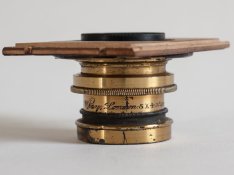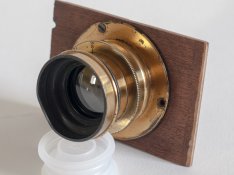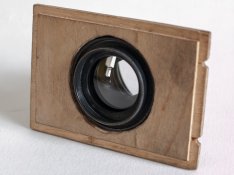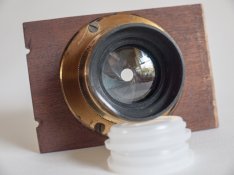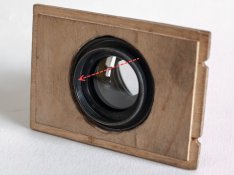This has recently come into my possession. Pity it's not for 8x10, but for nothing one can't be picky.
I know there were zillions of lenses made early in the last century, but it would be nice to know any further details than the obvious ones.
Engraved "Wray London 5x4 No 3170" & aperture scale f/5.6 to 64
Two elements which both unscrew and appear interchangeable. 10 bladed iris. Homemade lensboard as you can see.
The focal length seems to be 5" (estimated by ruler and sharpness of image thrown on the wall )
)
If I remove one element, it still seems to throw a decent image and the focal length is doubled.
Am I correct in thinking this is a "rapid rectilinear" type?
Any ideas as to age?
Any further information?
I know there were zillions of lenses made early in the last century, but it would be nice to know any further details than the obvious ones.
Engraved "Wray London 5x4 No 3170" & aperture scale f/5.6 to 64
Two elements which both unscrew and appear interchangeable. 10 bladed iris. Homemade lensboard as you can see.
The focal length seems to be 5" (estimated by ruler and sharpness of image thrown on the wall
 )
)If I remove one element, it still seems to throw a decent image and the focal length is doubled.
Am I correct in thinking this is a "rapid rectilinear" type?
Any ideas as to age?
Any further information?
Attachments
Last edited by a moderator:


